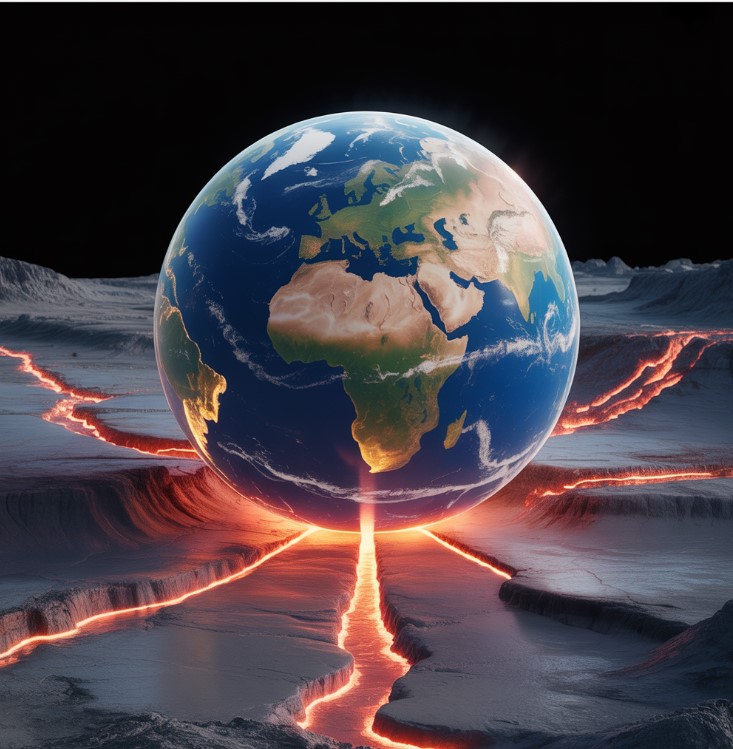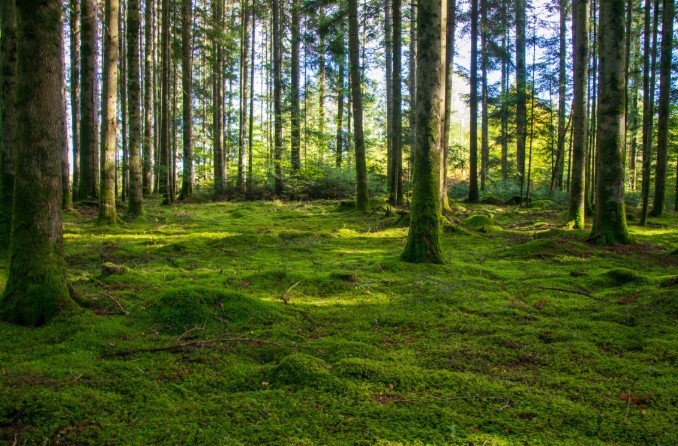Contents
We explain what geothermal energy is, and how it is obtained. Its advantages and disadvantages. Examples of geothermal energy.
What is geothermal energy?
Geothermal energy is a somewhat renewable type of energy of volcanic origin, meaning it involves harnessing the Earth’s internal heat to extract subsurface water at high temperatures, from which thermal energy can be derived or used to generate electricity.
As we approach the planet’s core, temperatures rise significantly due to increased pressure, gravity, and reduced distance from the molten metal core that is the Earth’s heart. This is why numerous deposits of boiling water can be found underground, which can be released and brought to the surface, giving rise to large jets of steam, geysers, and hot springs that have been utilized by humanity for various purposes since ancient times. Such deposits are very common in areas of high volcanic activity.
This type of energy is popular because it comes from a renewable source, although complications can lead to the depletion of deposits. These, by the way, can be of three types:
- Dry. Deposits of hot steam and gas, lacking liquid water.
- Hot water. Can be springs or underground aquifers with water compressed at high temperatures.
- Geysers. Thermal deposits with such high pressure that they sporadically expel steam or boiling water to the surface in large jets.
You might also like: Renewable energies.
How is geothermal energy obtained?
As mentioned, geothermal energy comes from the Earth’s subsurface waters, whose pressure and temperature occur naturally. In these deposits, geothermal plants are typically installed that release the water or steam, use it to generate electricity or extract heat and redirect it, and then reinject water at normal temperature into the well to maintain the cycle.
There are also more domestic methods of extraction, such as heating with geothermal pumps, which allow the use of gas or boiling water from the subsurface to provide warmth to homes or entire buildings, or even to climate-control greenhouses and agricultural drying facilities.
Advantages of geothermal energy
The main advantages of this type of energy are:
It is natural. It comes from the planet itself, so it poses no technological or biological risks to consider.
It is economical. It does not require constant raw materials or depend on an international market of inputs that could suddenly increase costs.
It is ecological. It does not produce large amounts of waste or annoying noises, and its emission of CO2 and other greenhouse gases is lower than that from other energy sources, such as burning fossil fuels. Additionally, it uses modest areas without needing to dam rivers or cut down forests.
It is reliable. On a human timescale, it is essentially an inexhaustible energy source.
Disadvantages of geothermal energy
At the same time, geothermal energy presents the following drawbacks:
Landscape deterioration. Installing plants often has a cost in terms of landscape, which can impact tourism to some extent.
Indirect contamination. The water extracted from the subsurface may contain polluting substances that, when evaporated, must be disposed of and can be toxic.
It requires specific conditions. It cannot be done just anywhere, only in volcanic zones (except for geothermal pump heating systems).
Risk of earthquakes. In some cases, reinjected water can cool the magma, causing microseisms and permanently destroying the deposit.
What is geothermal energy used for?
This type of energy can be used directly to heat buildings, dry agricultural or industrial materials, or even cook food. It is an immediate source of heat.
In geothermal power plants, on the other hand, this heat is used to boil water (or the steam extracted directly from the well) to drive a system of turbines that, similar to nuclear or fossil fuel electrical installations, generate usable electricity.
Examples of geothermal energy
Some examples of this type of energy include:
The Geysers. A set of geothermal power plants 116 km from San Francisco in the United States, considered the largest complex of its kind in the world. It can produce over 950 MW of electricity at 63% of its capacity, harnessing steam from more than 350 active geysers.
The Timanfaya Roasting Oven. In the Canary Islands, it uses the region’s magmatic activity for the oven in the “El Diablo” restaurant serving artisanal food, on the island of Lanzarote. This oven taps into a well that goes straight into the subsurface.
Volcanoes. The most well-known and devastating natural manifestation of geothermal energy, consisting of explosions of subsurface material that eject boiling magma (lava), toxic gases, and suspended ash into the environment. They have enormous energy potential but are unharnessable.





